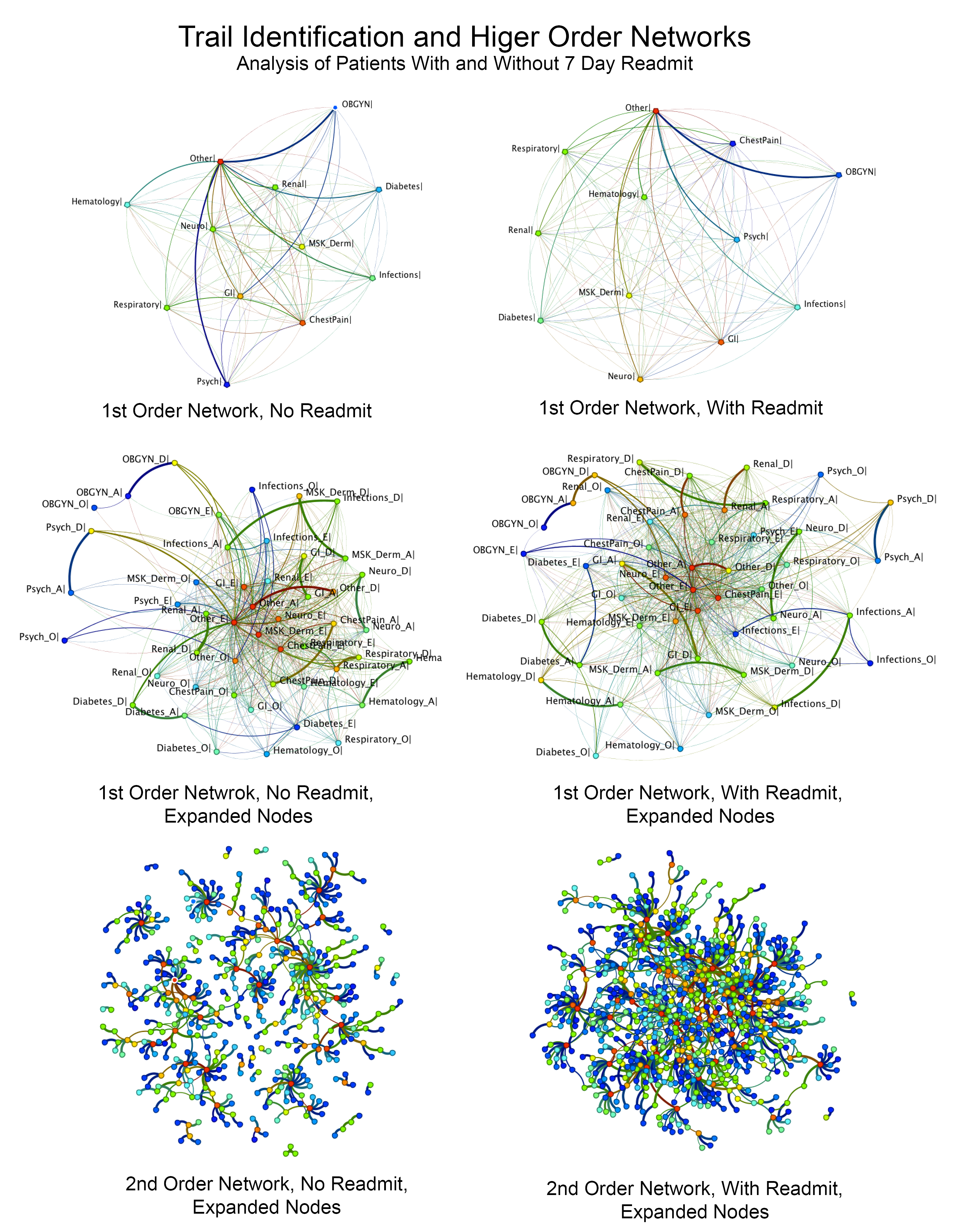Trail Identification and High Dimensional Networks
Overview | People | Collaborators | Sponsors | Publications | Tools
Project Goal
The overarching research goal for this project is to better utilize and understand temporal (trail) data. We aim to create a framework that can be used by both healthcare professionals and patients. This framework will provide trail data based descriptive and predictive modeling of a hospital's records and patient's status. However, assuming the Markov property (first-order dependency) for trail data becomes limiting. The underlying research aim of this project is to determine higher order dependencies within the trail data and to identify trails that give us key insight for a particular patient - trail based predictive models.
Methods Used
We use a Python based framework to capture trails of varying lengths observed in the data as well as higher order dependencies among them. To address the open question of how to find and utilize the higher order dependencies within the data, we combine Markov chains of different (higher) orders, so they capture temporal correlations hidden in the trail data. From here, we will use several different String Metric algorithms (Levenshtein Distance, Hamming Distance Smith-Waterman, etc.) to provide trail comparison for future network and trail based predictive models. Furthermore, ORA and classical network metrics are used to better understand obtained higher order networks and to provide insightful statistics.
Expected Results
We are developing and expanding a Python module which will work as an envelope to several other network-based modules. The end goal for this module is to be utilized for finding higher order dependencies in the temporal data and building trail based predictive models. For healthcare professionals, this module will be used to provide the next best step for a particular patient given a corpus of healthy and to provide insightful statistics overall. The final step is going to be offline and web-based integration of the code with ORA in a more general, user friendly way for broader audience.





